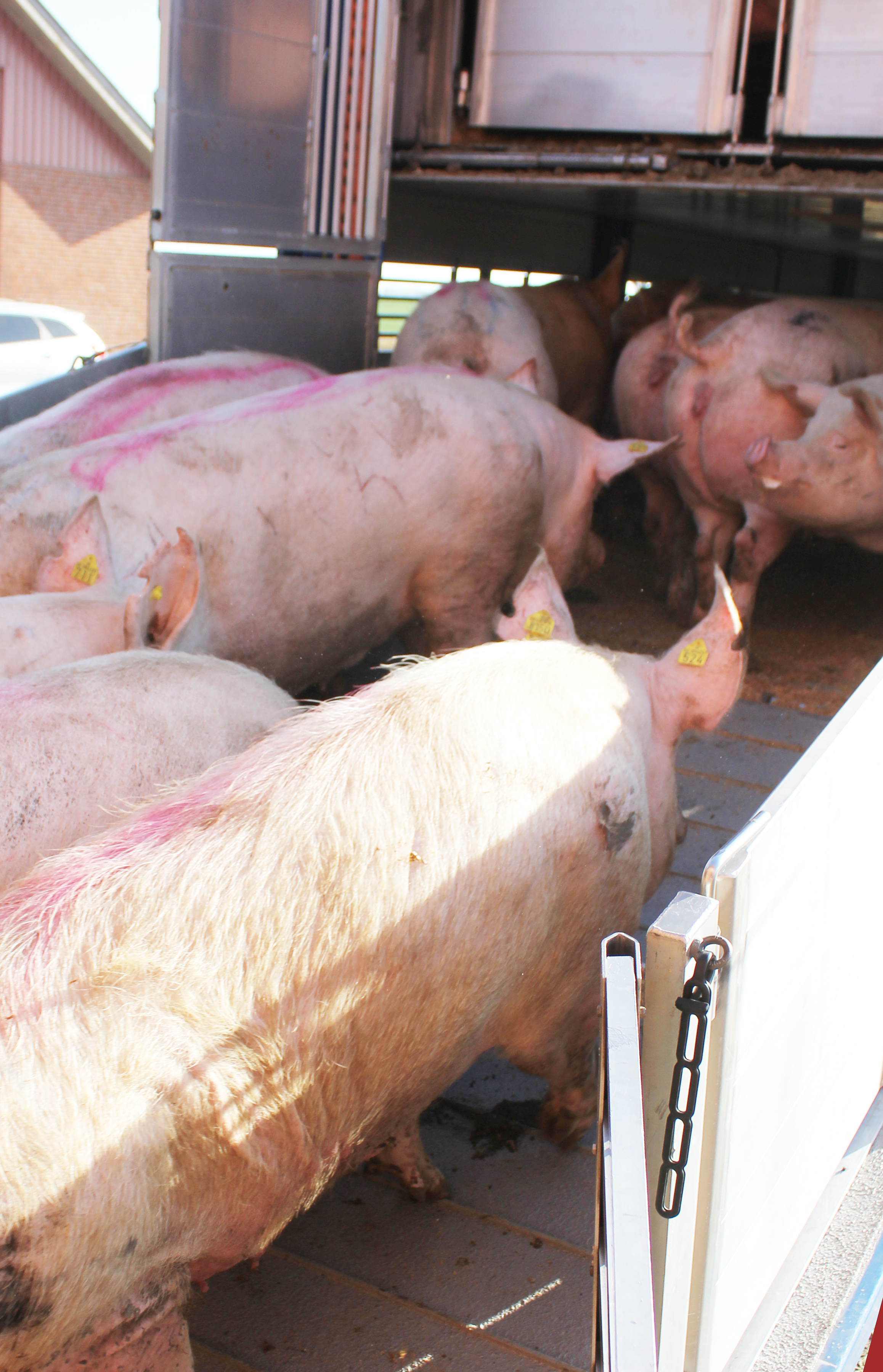New knowledge on the condition of cull sows prior to transportation to the abattoir
Researchers from Aarhus University are among the first to study the condition of cull sows on the day of transportation to slaughter.

About half of Danish sows are culled and destined for slaughter each year – approximately 500,000 animals – and are sent on their last journey to the abattoir. So far, this group of animals has received almost no scientific attention. Recently, researchers from Aarhus University carried out one of the first studies of the clinical condition of cull sows on the day of transportation to slaughter.
Previous international studies have focused on the condition of sows when they arrive at the abattoir. The results from these studies demonstrated that – compared to market weight pigs – culled sows constituted the majority of animals showing signs of fatigue, being seriously lame or of a low body condition score at arrival. So far, however, knowledge on the clinical condition of culled sows prior to being transported to the abattoir is very limited.
- It seems paradoxical, as this knowledge is very relevant when it comes to assessing whether the animals are fit for transport, says Karen Thodberg, Department of Animal Science at Aarhus University, and one of the authors of the recently published study.
Hundreds of cull sows examined
The Aarhus University study comprised 12 herds, each of which were visited by trained technicians on the day of transportation. The technicians conducted thorough clinical examinations of all sows selected by the farmers for slaughter – a total of 522 animals. The clinical variables examined included e.g. body temperature, breathing frequency, body condition score, gait and various injuries.
Only four of the sows selected by the farmers, were considered unfit for transportation. They remained in the herd and were not included in the study. A significant part of the rest of the sows had various injuries or disabilities that might affect their welfare during transport.
- The various injuries or lesions indicate that the sows are more sensitive to the strain related to transportation than other types of pigs, says Karen Thodberg.
Less than 1 percent of the sows were lame, and a major part of the sows showed signs of various injuries such as wounds (approx. 55 percent), superficial skin lesions (approx. 30 percent) and udder lesions (approx. 25 percent), and 60 sows had at least one shoulder ulcer.
Lactating cull sows may be more sensitive
A significant part – almost 40 percent – of the sows came directly from the farrowing barn, and were lactating at the day of transportation to slaughter. The lactating sows displayed a higher frequency of deviations from normal on clinical variables related to the udder, such as udder swellings and other signs of inflammation. In the scientific paper, the researchers discuss whether lactating cull sows have a higher sensitivity to heat stress caused by their high metabolism.
This study provides an overall insight into the extent as well as type of injuries and abnormalities in cull sows; however, there is a need for further knowledge about the sows’ behavior and welfare in the last days of their lives.
- Our results demonstrate that there is a need for further studies focusing on different aspects of the condition of cull sows in the interval from the culling decision is made until the time of slaughter. These should also comprise the housing systems and group size that best ensure sow welfare in this period, as well as the conditions during transportation to the abattoir. The conditions for lactating cull sows should be given special attention, says Karen Thodberg.
Further information
The study was initiated via a request from the Ministry of Environment and Food of Denmark as part of a major examination of livestock fitness for transportation.
Further articles (in Danish):
- Ny viden om faktorer der kan belaste søer under transport til slagtning
- Report Vurdering af dyrs transportegnethed
Contact
Senior researcher Karen Thodberg
Department of Animal Science, Aarhus University
E-mail karen.thodberg@anis.au.dk
Tel.: +45 8715 7938
Senior researcher Mette S. Herskin
Department of Animal Science, Aarhus University
E-mail: mettes.herskin@anis.au.dk
Tel.: +45 8715 7945
Mobile: +45 5050 2969
